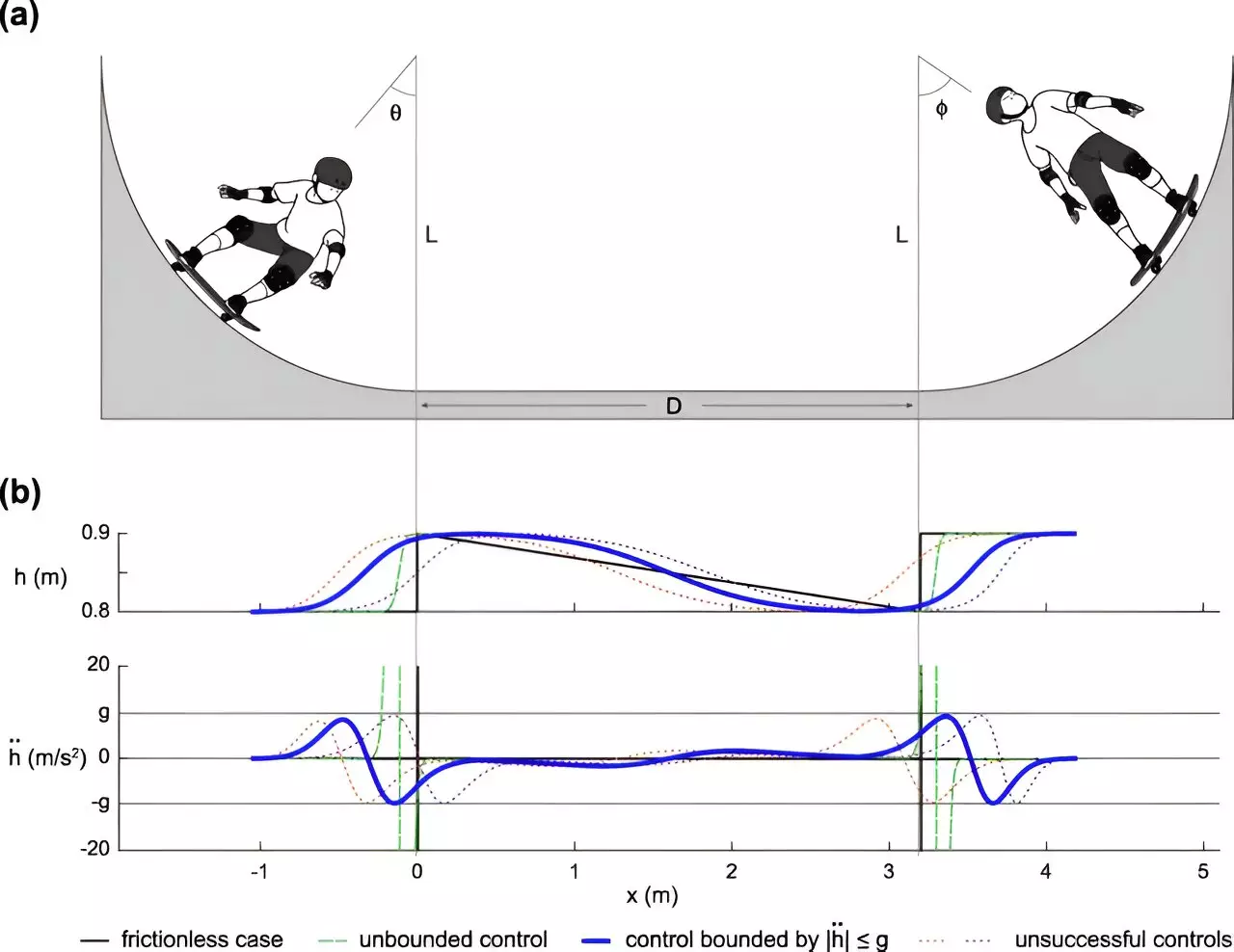In an impressive fusion of engineering, mathematics, and real-world athleticism, a team from ETH Zürich, in collaboration with renowned institutions in Japan, has undertaken the ambitious task of modeling the dynamics of skateboarding on a half-pipe. Their efforts reveal not only the complexities of human movement in this context but also the broader implications for both robotics and sports science. The findings, detailed in their recent publication in *Physical Review Research*, shed light on how mathematical rigor can enhance our understanding of seemingly simple athletic maneuvers.
At the heart of their study is the structure known as the half-pipe, which is integral to skateboarding culture. This formation typically consists of a semicircular slope crafted from materials like wood or cement, creating a uniquely challenging environment for skateboarders. When navigating a half-pipe, the skater embarks on a rhythmic journey, oscillating between ascending and descending the two sides of the structure. The simplicity of this back-and-forth motion belies the underlying physics—a captivating dance of energy transfer and gravitational forces that the team sought to explore.
To ground their research in more familiar territory, the team utilized the motion of a swing as an analog for the dynamics at play in skateboarding. This comparison not only offered an accessible framework but also allowed the researchers to break down the mechanics of pumping—a technique crucial for maintaining momentum on the half-pipe. Crouching in the valley and then pushing off the ramp is strikingly similar to the way children pump their legs to sustain movement on a swing. This analogy proved instrumental in formulating a model that accurately represents the biomechanical actions of skateboarders.
With a robust theoretical foundation laid, the engineers set their sights on empirically validating their model. They meticulously analyzed videos of skateboarders in action, noting specific body movements, angles of the skateboard, and adjustments in mass distribution. These factors were essential to understanding how skaters generate speed while performing tricks. By weaving together observed behaviors with mathematical principles, they crafted a model that mirrors reality, capturing the essence of what it means to skate.
The crux of the model revolves around the mechanics of pumping. As skaters navigate the half-pipe, they must employ a nuanced technique to transition smoothly from descending the ramp to ascending it—akin to generating lift off a swing. Each pump requires precise timing and control, with skaters needing to synchronize their movements with the curvature of the ramp. The researchers’ model sought to identify the optimal ways to maximize speed through effective pumping; however, they acknowledged that, while theoretically sound, their model’s recommendations would not translate perfectly to real-life practice—overzealous pumping could inadvertently launch a skater off the pipe entirely.
The findings of this research extend beyond the realm of skateboarding. The insights obtained from the model demonstrate potential applications in robotics, particularly in helping machines traverse uneven terrains. Understanding how to maintain balance amid shifting slopes can be invaluable for developing robots that can mimic the agile maneuvers of human athletes. As robots are increasingly tasked with navigating environments that require adaptability and balance, models like the one developed in this study will be pivotal in advancing their capabilities.
This multidisciplinary approach, merging physics, engineering, and sports, exemplifies the power of scientific inquiry in unraveling the nuances of motion. The team’s successful model is not simply a technical achievement; it embodies the intersection of human skill and mathematical precision. As these findings resonate across fields—from enhancing our understanding of athletic performance to informing the future of robotic navigation—the interplay of mathematics and movement continues to unveil new horizons, reminding us of the elegance embedded in both sports and science.


Leave a Reply